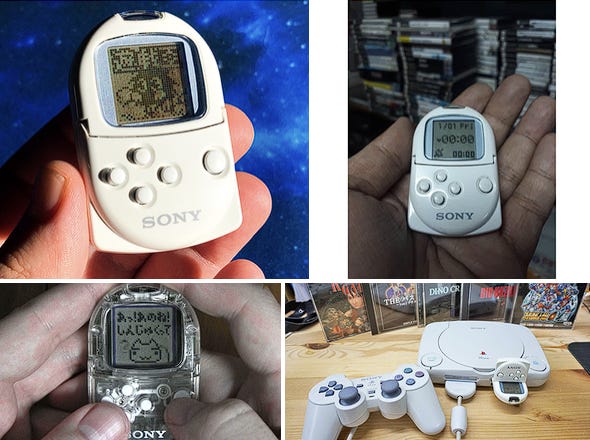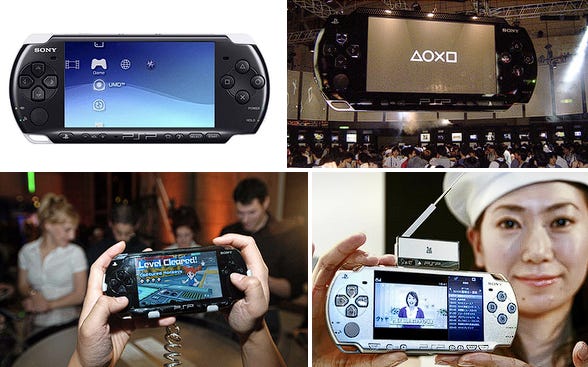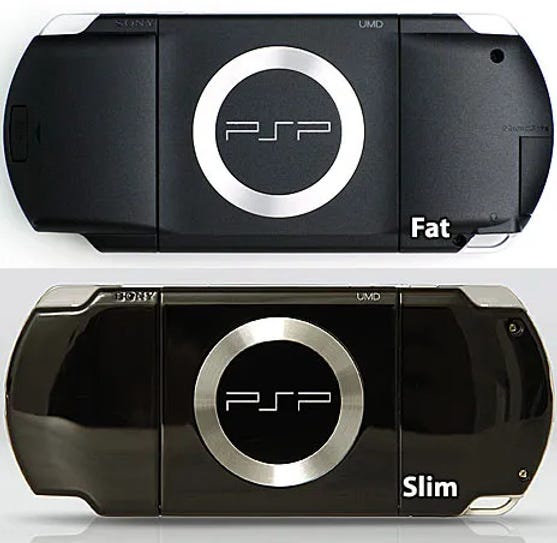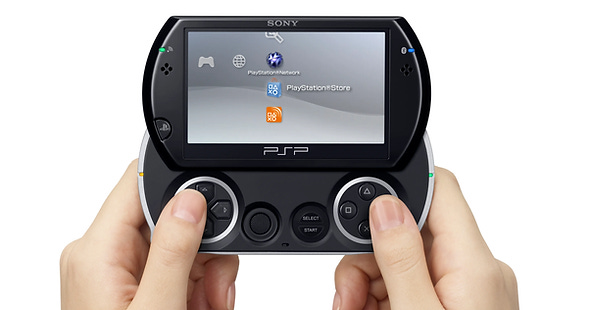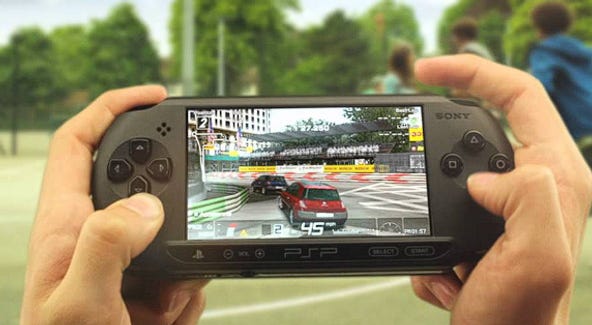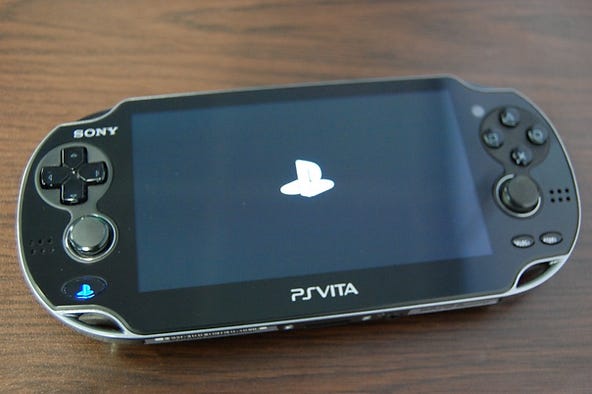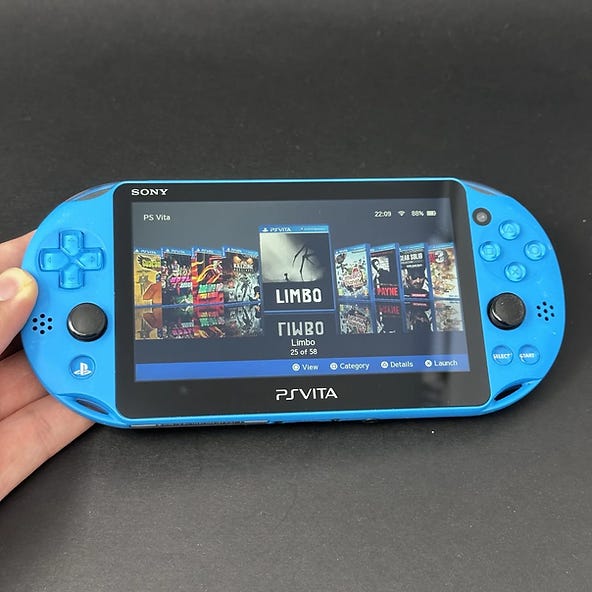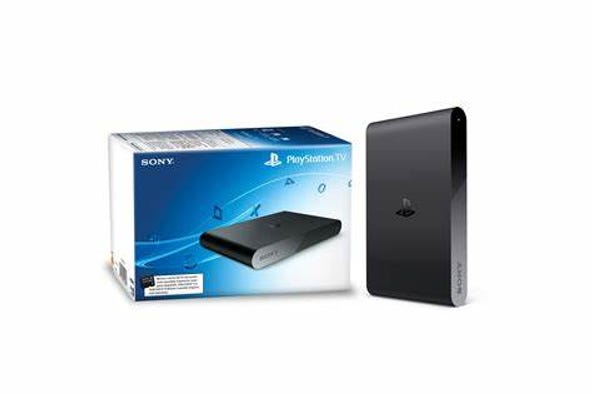Pocket Station
The Pocket Station, Sony’s first handheld, debuted in 1999 exclusively in Japan for roughly $40 in today’s terms. Marketed as a hybrid PS1 memory card and digital assistant, it also played its own games. This minuscule device features unlabeled buttons—too small to read—and offers basic clock and calendar functions. Games, downloaded via compatible PS1 titles through the memory card slot, include Crash World’s three Japanese 2D top-down offerings, distilling Crash Bandicoot’s platforming into a clear 32-pixel-wide experience. A simple jump and a rear speaker’s classic bit sounds complement its fragile build. Powered by a 33 kHz CPU, 2 KB of RAM, and a 32x32 LCD screen, it doubles as a memory card with 128 KB of storage. An IR sensor enabled multiplayer with other units, echoing the Game Boy and Tamagotchi’s social appeal. Selling nearly 5 million units despite Japan-only demand, it laid a foundation for Sony’s handheld ambitions.
PlayStation Portable (PSP)
Launched in 2005, the PSP challenged Nintendo’s handheld dominance—Game Boy, Game Boy Advance, and the dual-screened DS—with PS2-level power in a portable package. Its value pack included manuals, a demo disc, a screen cloth, a pouch, AC-branded earphones, a strap, a remote, a 32 MB Memory Stick Duo, and a removable battery. The sleek console’s 4.3-inch LCD boasted 24-bit color and 272p resolution, dwarfing the Pocket Station’s pixels and outshining the DS. Dual 333 MHz CPUs delivered eight times the DS’s performance and 20,000 times the Pocket Station’s, paired with an analog nub and Universal Media Discs (UMDs). These 1.8 GB mini-CDs outstripped the DS’s 512 MB cartridges, supporting big exclusives and movie playback. Loading screens scratched audibly, later fixed with silent flash storage, but its $400 price (today’s money) lagged behind the DS’s $200 drop, despite tactile UMD charm.
PSP-2000 (Slim)
The PSP-2000, or Slim, arrived in 2007, refining the original. It shaved thickness from 23 mm to 18.6 mm and weight from 280 g to 189 g, enhancing portability. Beyond slimming down, it introduced TV output—emulating Nintendo Switch functionality a decade early. Retaining the 4.3-inch LCD and UMD support, it built on the PSP’s premium feel, delivering console-quality gaming on larger screens. This revision aimed to counter the DS Lite’s success, offering a tangible leap in handheld comfort and versatility while maintaining the core PSP experience.
PSP Go
The PSP Go, released in 2009, embraced extreme portability, inspired by Sony’s Mylo communicator. Its tiny, slider design ditched UMDs for 16 GB of internal storage, relying on PlayStation Store downloads. The robust opening mechanism outshines many modern foldables, but the all-digital shift alienated gamers. A “buy a Go, get 10 free games” promotion—titles worth more than the console—failed to reverse its commercial flop, proving the world wasn’t ready for disc-free gaming despite its sleek form factor.
PSP Street
The PSP Street, a late revision, slashed costs by $100, targeting the DS’s price point. It ditched stereo audio, brightness buttons, and Wi-Fi, sporting a slick matte finish. After seven years, this stripped-down model arrived too late to sway opinions. For users indifferent to Wi-Fi, it was a smart cut, but as a cheaper, feature-light last-gen option, it failed to ignite interest, marking the PSP line’s final hardware tweak.
PlayStation Vita
The PlayStation Vita, launched in 2012, succeeded the PSP with dual analog sticks, a touch-sensitive back panel, six-axis motion control, front and rear cameras, 3G connectivity, and premium metal-and-glass construction. Its 5-inch, 544p capacitive touchscreen quadrupled the PSP’s pixels, powered by tech ten times stronger than its predecessor and 200,000 times the Pocket Station’s. Assassin’s Creed Liberation showcased crisp visuals and stereo sound, though ambitious titles lagged under overhyped “PS3-on-the-go” claims. Gimmicks like back touch and AR flopped without developer buy-in. Priced at $330, with $100 64 GB memory cards, it stumbled against the 3DS, smartphones, and the PS4’s 2013 debut, hitting 16 million sales.
PlayStation Vita Slim
The Vita Slim addressed storage woes with 1 GB internally, but using external cards nullified it, forcing costly upgrades. Slimmer and 40 g lighter, it swapped the OLED for a cheaper LCD, dimming vibrancy. Sony’s half-hearted effort showed—sales figures ceased, hinting at embarrassment. Pivoting to a PS4 companion via Remote Play and indie focus salvaged its niche, leveraging its solid hardware for smaller games.
PlayStation TV
The PS TV (2014) stripped the Vita into a non-portable media box, requiring a PS4 controller. It played some games and movies—lower quality than a PS4—repurposing Vita hardware to shift units. Priced generously, its purpose puzzled beside a PS4, with titles like Assassin’s Creed Liberation unsupported, underscoring its oddity as a stopgap. After a decade, the PlayStation Portal emerged, streaming PS5 games on an 8-inch screen four times the Vita’s resolution, with adaptive triggers. Latency is low, visuals crisp, though dynamic resolution shifts with Wi-Fi. Lacking Bluetooth headphone support (Sony-only compatibility), its Switch-like design offers freedom. Paired with Surfshark VPN on a router, it secures traffic—an easy setup with anonymity and ad-blocking perks, under $3 monthly with code “boss.” It’s a bold, streaming-only return to handhelds, distinct yet tethered.



